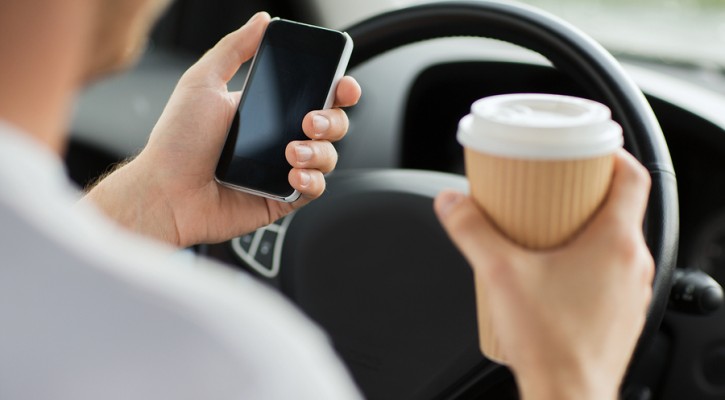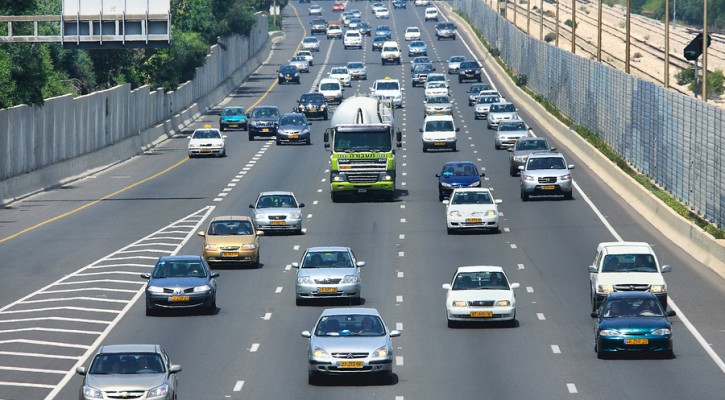
30 Years Without an Accident: Driving Tips from a Pro
April 10, 2014
Ron Hawkins, Jr. has been a truck driver for thirty years. In all that time, he has never been involved in an accident. Considering that most of us don’t drive for a living and still get in the occasional fender bender, that record is pretty impressive. This trucker has seen it all: people texting while driving, shaving while driving, and even reading the newspaper while driving. He has shared the road with inexperienced and distracted drivers, as well as a few courteous drivers. In the Toledo Blade, Hawkins shares his experiences, as well as a lot of helpful tips to make us all safer drivers. See the full story here:
How to Stop Texting While Driving? There’s an App for That.
April 8, 2014
Whether you want to control your own bad habit, or you want to ensure that your teen driver isn’t texting behind the wheel, there’s an app for that. In fact, there’s a few.
TXTShield is a password-protected app that shuts down a phone’s ability to text while the car is in motion. The minimum speed that shuts down the app can be set from 10 mph to 40 mph. When texting shuts down, incoming texts do not show up on the home screen and the app automatically sends a response to the person who texted, letting them know that they are driving and will respond later.
Text Limit is another option. This app shuts down the ability to text, call (except 911) and use the internet when the car reaches 30 mph to 60 mph, depending on what the parent or administrator sets as the minimum speed. It also allows control through a website, and sends location updates to the parent/administrator every 5 minutes.
War on Distracted Driving
April 7, 2014
Distracted driving is now such a problem that the Department of Transportation is launching an advertising campaign coupled with law enforcement crackdown to combat the nation wide epidemic.
Radio, TV, and internet ads will run through next week and police across the country will be on the look out for distracted drivers.
The ads will be straightforward, depicting the consequences of driving distracted. The theme is “U drive. U text. U pay”, and internet promoters will be using the hashtag #justdrive. The aim is to get drivers, especially teens, to take a pledge to refrain from texting and driving, as well as give them tools to help raise awareness.
Texting while driving is now illegal in 43 states, and 12 states have banned the use of hand-held cellphones while driving.

Distracted Driving Tops Drunken Driving
April 5, 2014
According to the Nevada Highway Patrol, Nevada is now seeing more distracted driving crashes than drunken driving crashes. And, since most people don’t want to admit they are distracted by their cell phones, the already high statistics are actually higher than anyone thinks. See the full story here:

Teaching Teens How to Drive
April 4, 2014
Teaching teens how to drive is one of the most nerve-wracking experiences of parenthood. That’s why teenage drivers should take it easy and drive carefully, while parents should prepare for the challenge by reading this quick list of best-practice tips.
Keep your priorities straight. Drivers education should be at the top of your To Do List. If they are taking classes, then make sure they are always on time and never pull them out early.
Practice often. Teens are advised to drive a certain number of hours by their driver’s education program. Make sure that you two are meeting or exceeding these hours.
Start slow. Begin your lessons in an empty, wide-open parking lot. Make sure they can accelerate, brake, turn, and drive straight. Once you both feel comfortable with these skills, then advance to a low-speed, low-traffic road, and then gradually move towards moderate traffic and higher speeds as skills progress.
Remain calm. Tensions are high and mistakes are costly, however, freaking out and yelling will only make the situation worse. So remember to always remain calm and give “constructive criticism”.
Give good directions. When helping your teen navigate, be sure to know where you are going, communicate effectively with very specific instructions, and always give directions far in advance. Rather than, “Turn right… here!”, tell your teen driver “At the next stop light, take a right”, or “Take the off ramp at exit 243, two miles ahead”.
Point out other driver’s mistakes. This is a great way to criticize bad driving without having to directly criticize your teen driver. You can also point out your own mistakes when you are driving.
Talk about distracted driving. Anything that takes their eyes and mind off the road is distracted driving. Tell them to keep their cell phones out of reach, their vanity mirrors closed, their music pre-tuned and their eyes on the road. You can also have them read this interesting study on distracted driving as it specifically relates to teen drivers.
Monkey See, Monkey Do
April 3, 2014
Long before teens begin their formal driver training, they are quietly and subconsciously taking driving queues from their parents. Every time a parent fails to come to a complete stop, or drives over the speed limit, or changes lanes without a blinker, their kid takes a mental note for later use.
So, the best way to ensure your kids will drive safely is to be a good driving role model. Don’t fiddle with the phone, break or bend the traffic laws, or drive aggressively. Be a safe and smart driver and chances are your kid will do the same.
Teen Distractions
April 3, 2014
All teens, parents and psychology majors will find this article over at the Atlantic particularly interesting. Apparently, boys are distracted by girls, and girls are distracted by boys, and everyone makes poor decisions when they drive with fellow-teen passengers. It may sound obvious, but the biological reasons for these poor decisions, and the results of the psychological study are enlightening nonetheless. See the full article here:
TWIT Spotting
April 2, 2014
If you like to text when you drive, then you might just end up on a TWIT (Texting While In Traffic) billboard. Passengers and pedestrians have been snapping photos of people texting for twitspotting.com, a website designed to let texting drivers know that they are being watched, and judged.
The TWIT project was created by San francisco graphic designer Brian Singer. According to Singer’s unofficial estimation, “For every nose picker, there’s 20 texters”. And so, the website was born, and the images started flooding in. Some of the photos have been posted on billboards throughout the San Francisco area.
Protecting Motorcyclists
April 1, 2014
With the warmer weather, drivers will be seeing a lot more motorcycles on the road. It’s important to be aware of the dangers that motorcycle riders face, and to always drive safely and respectfully no matter who you are sharing the road with. Last year, there were 4,762 motorcyclists killed in accidents, and any number of fatal crashes is too many. So this year, let’s keep an eye out for our friends on bikes. Here are a few tips to follow to prevent more motorcycle deaths this year:
– DO NOT TAILGATE! Motorcycles can stop much more quickly than cars, so be sure to give them plenty of distance in case they need to turn or brake suddenly to avoid an accident.
– Look twice before turning or switching lanes. Motorcycles are often unseen by people in cars and trucks.
– Give motorcycles a full lane width. There’s not enough room for the both of you. Even if you think they are turning, don’t attempt to pass until they have completed the turn. Many bikes have turn signals that don’t turn off automatically, and riders often forget to turn them off.
– DON’T DRIVE DISTRACTED!
A collision with a motorcycle is most often fatal for the rider, so drive safe this season and help keep our motorcylists alive.

Trucking 8th Deadliest Occupation
March 31, 2014
The trucking industry has seen a drop in fatalities. Great news! However, trucking is still a member of the top ten deadliest occupations, ranking in at #8 behind power line workers.
So, what does this mean? Well, in 2012 there were a total of 741 drivers killed on the job, and the truck driver fatality rate was 6X the national average. Considering all the hazards of long hours, constant travel, distracted drivers, inclement weather and unhealthy food options, it’s no wonder that truckers have a high ranking on the deadly occupations list. However, new local policies are cracking down on distracted driving, especially texting while driving, and new regulations in the trucking industry may help alleviate some of these dangers.
